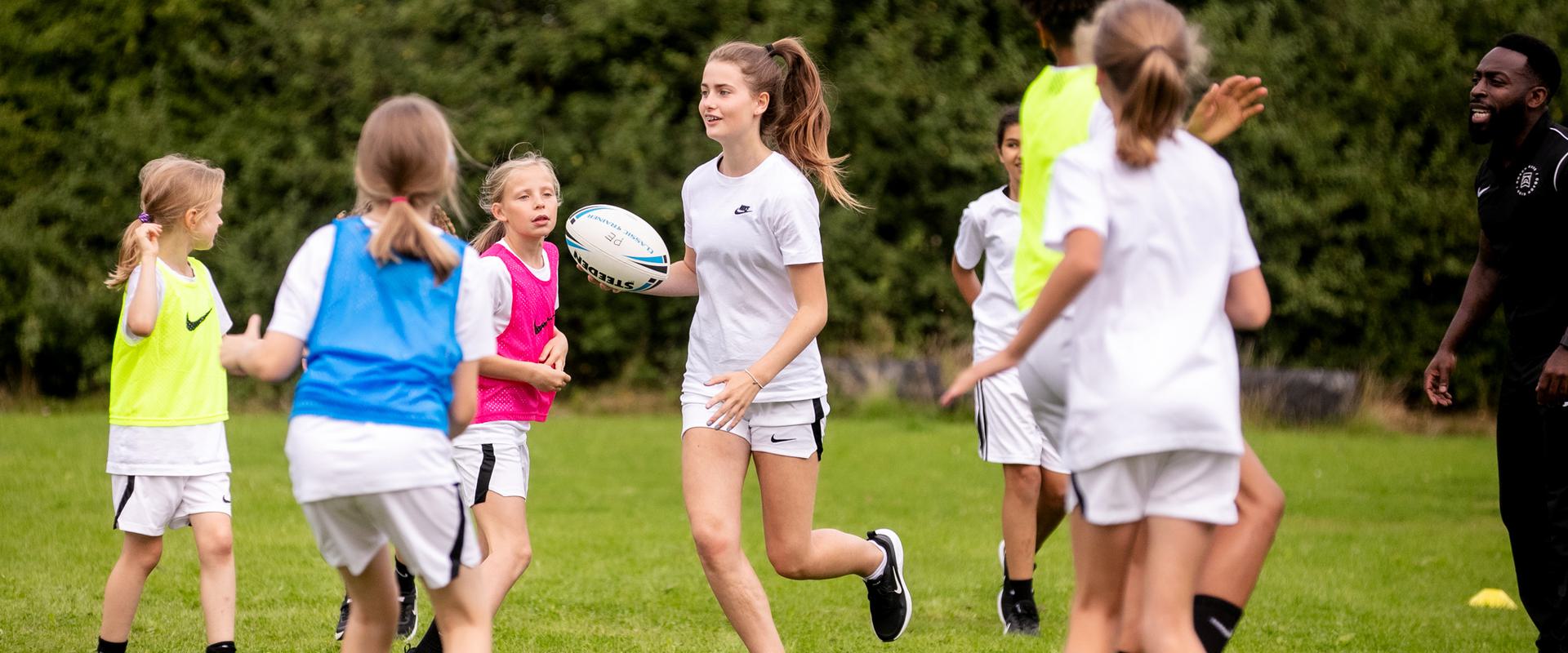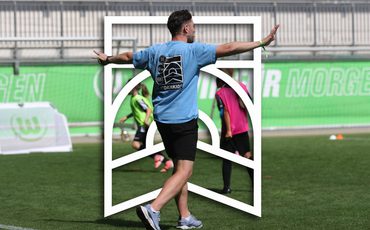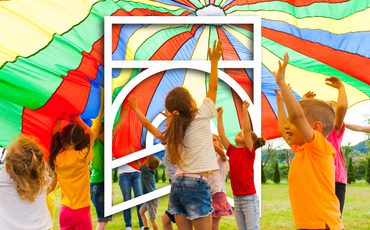
Putting Theory Into Practice: Using Games-Based Activities to Achieve Psycho-Social Outcomes
by Blake Richardson of ConnectedCoaches – UK Coaching’s FREE online community for coaches
A review of the practical workshop at the ICOACHKIDS International Conference (Sept 2018) which served as a valuable lesson on the need for coaches to put more thought into using psychosocial coaching methods to aid children’s learning and development.
We all know that possessing the necessary technical skills, tactical proficiency and physical attributes can still leave an athlete wanting. It is a potent combination but nevertheless an incomplete set and therefore insufficient for reaching your full potential.
Fortunately, coaching also has the capacity to help people develop their psychological and behavioural skills by creating an optimal social environment conducive to learning.
The interaction and overlapping of all of these constituent parts is what truly transforms athletes into successful performers, and successful people.
When we talk about psychology playing a crucial role in helping an athlete become the best that they can be – elevating them to a level beyond aspiring – the characteristics we immediately think of include self-motivated, resilient, competitive, self-aware, an ability to retain focus and to cope with pressure. Most high-performing athletes have also mastered the ability to problem solve and make quick decisions in the heat of battle and are ace goal-setters as well as go-getters.
Concepts like purposeful practice, visual imagery and metaphors, self-talk, flow state, growth mindset and emotional intelligence are becoming ever more popular. Finding a way to convert these theories into positive action and embed them into athletes’ routines can have a powerful impact, influencing attitudes, behaviour and emotions and, ultimately, improving performance by sharpening an athlete’s psychological skill set.
Just as effective in a developmental sense is the amalgamation of psychology and social behaviour – the relationship between the mind and the social environment.
The English Oxford Dictionaries’ definition of psychosocial is ‘the interrelation of social factors and individual thought and behaviour’. In a coaching context, and in terms of an athlete’s psychological and social development, it explores the role of social interaction and relationships within a sporting environment to stimulate learning, as athletes establish a sense of competence and control of their situation and surroundings.’
Utilised effectively, therefore, psychosocial play and games-based training is a highly effective way to develop learning at all ages and all levels of ability.
This was demonstrated to great effect in a practical workshop by Dr Tom Mitchell, Dr Andy Abraham and Ben Lazenby at the iCoachKids International Conference held at Leeds Beckett University.
Delegates were able to see in person and at close quarters how questioning and facilitation techniques can have a profound impact on getting learners to solve tactical problems and advance their psychosocial competencies.
Ages and Stages
Tom and Andy, both part of the Sport Coaching Degree faculty at Leeds Beckett and coaches in their own right with Doncaster Rovers FC and Otley Zebras RUFC respectively, and Ben, Yorkshire Carnegie RUFC Academy manager, ran a learner-centred, group problem solving session with Andy's under-12s rugby union team.
Before the children entered the hall, delegates were briefed on the different psychosocial challenges and competencies that exist in three different age groups: early primary (5-10 years), late primary (10-14) and secondary (14-16).
‘While the needs differ from group to group, you will of course get children of a certain age who will fit into another of the columns. There will be some crossover,’ said Tom of the need for coaches to be mindful of the variations in maturation rate among adolescents.
Expanding on what those needs were, he explained that psychological challenges at early primary age should focus principally on the process of dealing with winning and losing, having fun and learning to ‘give it a go’. Social challenges include learning to play by the rules and the importance of playing together (with an emphasis on cooperation, sharing and respect).
By secondary school age, the psychological challenges are more cerebral, such as self-regulation and the exploration of more intricate coping mechanisms, with examples of the social skills coaches should be endeavouring to develop including empathy (understanding and recognising other people’s perspectives) and supporting others.
What about the psychological and social challenges at late primary age? Well, this was what we were about to find out, with Tom declaring: ‘I don’t think there’s enough practical guidance out there for coaches in terms of being able to see what the theory actually looks like in practice. We are going to show you practices that develop some of these skills and competencies.'
‘We term them skills [what athletes learn from these psychosocial challenges] because you can get better at them and teach them just as you might technical skills.
‘There’s no wrong answers for them; it’s about them exploring to see what happens in a safe environment.’
Enter the Zebras
The players were told they would be taking part in a game of offside touch-tag rugby. After they had split themselves into two even groups, the question Ben wanted the two groups to answer was: How many ways can you think of for moving the ball and advancing towards the end zone?
‘You can pass the ball in any direction, you can run with the ball and you score by catching the ball and carrying it over the end zone,’ he explained. ‘But if you get touched by an opposing player you have to stop and put the ball down on the floor and possession moves to the other team.’
The players were given a few minutes to discuss tactics.
‘The aim of the game is to learn what does and what doesn’t work,’ Ben told the watching delegates. ‘You’d typically do this over a number of weeks. The questions and games might change but ultimately it is about layering their understanding.’
Tom added: ‘It is about encouraging them at this point to communicate, share ideas and debate and to begin taking ownership of the game.’
Let The Games Commence
And so the action began, with the two five-sided teams soon realising that ‘scoring’ was not going to be as easy as they first thought. Initially, the team in possession of the ball looked a bit panicked. Players were clumped together like a bate ball in the ocean, darting around like fish in a tightly-packed sphere while being pursued by a predator. No sooner had a player picked up a ball and fed a team-mate than they were tagged and the stop-start action continued on a loop.
After five minutes of frenzied activity the coaches called a stop to proceedings and the players were given a moment to reflect. Interjections from the coach were limited, with the players encouraged to take control of the conversation.
‘What different ways have we tried so far and what has worked best in terms of moving the ball effectively?’ asked Ben.
A player in each team was given a whiteboard to write down the answers, along with ideas for what they could do better.
Another five minutes of game-play ensued, followed by another period of reflection. Again, the level of direction and advice from the coach was minimal, in order to give players greater autonomy and control over their learning.
This time they were asked to analyse what the opposition were doing, and what they could learn from them.
I took a crafty peak at one team’s whiteboard at this point. ‘They are talking more, passing more, intercepting more,’ the spokesperson had written.
The other was being used at this stage more like a portable tactics board, with a series of noughts and crosses, representing the two teams, drawn in different formations, along with arrows showing the opposition’s successful attack patterns. The players resolved to try the move out for themselves when play resumed, while remaining alert to the possibility of the opposition attempting it.
Just wow! How old were these players again?
‘This is their show’
Once the players were able to perform the necessary range of skills more competently in the game scenario, and more points were scored, so Ben moved the goal-posts by adding an extra condition.
Another rugby ball was introduced. Each team now had a ball and the defending side could only halt their ball-carrying opponent by touching them with their own ball.
Players were asked: Can we still do the same things under these different rules and have the same success?
One member of each team was given an iPad and told to video the game.
At the next time-out, Ben asked the question: ‘From the footage, see if you can identify our best attacking plays and how we moved the ball to tag the opposition?’
When an astute point was made, Ben praised the player, who was told to share his thoughts with the whole team.
I was struck at this point by words I had heard sports psychologist and friend of ConnectedCoaches Dan Abrahams use about coaches’ communication technique in his podcast with Dr Ed Coughlan:
‘Know when to speak and when to shut up if you are a talker with a lot to say. Temper that feeling of wanting to get involved. Give the player the platform. This is their show.’
Paradoxically speaking, knowing when to remain silent can be a sound communication strategy – one Ben was clearly well practised in.
As he was in choosing the right questions, for effective questioning is also an intrinsic part of effective coaching.
A few more tweaks were made until, 20 minutes later, it was noticeable the players were executing combination plays, their thinking was a shade quicker, their passing a tad slicker, they had begun exploiting gaps, communicating with each other more ebulliently.
They had reached that stage where they fully owned the game, and because the coaching input had not been prescriptive, they were more willing to take risks and experiment. Their confidence had risen dramatically.
Psychosocial Outcomes Revealed
What we had witnessed from this single psychosocial games-based session was a number of children who had learned to problem solve, both individually and as part of a group, recognise their own strengths and weaknesses and, while not yet fully conversant with the concept of purposeful practice, they now had more of an insight into why practice is so important.
They were introduced to different styles of communication and had experienced the importance of working together as a team, and earning respect for each other that went beyond sharing equipment and taking turns.
‘Over a period of time you get independent learners and thinkers, in a competition environment and in the outside world,’ said Tom. ‘You get responsible adults, people who can hold down jobs.
‘But you tend to find not all coaches coach, they just run game situations.’
This was a valuable lesson in the need for coaches to put more thought into incorporating psychosocial coaching methods into their sessions, providing evidence that was clearly visible of the rewards that can be achieved for those adept at putting theory into practice.
Thanks to ConnectedCoaches for allowing us to post this blog. Get involved with their community by registering today - it's quick, simple and free!
Comments
Related Pages


